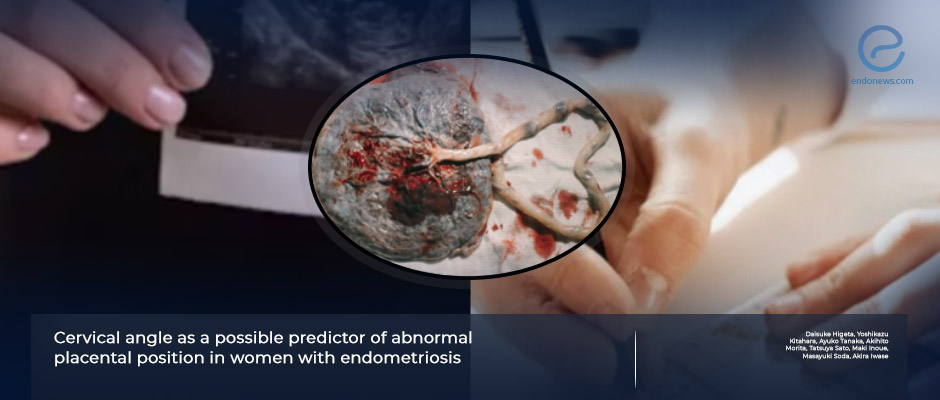Cervical angle, retroflex uterus and abnormal placental position in women with endometriosis
Mar 22, 2024
The cervical angle measurement could help to diagnose the retroflexity of the uterus.
Key Points
Importance
- The smaller cervical angle in the presence of endometriosis supports the hypothesis that endometriosis caused uterine retroflection by forming adhesions and leading to the formation of placenta previa.
Highlights
- Uterine retroversion (measured by cervical angle) is more common in pregnant women with endometriosis, which could potentially contribute to abnormal placental positioning.
What's done here
- A retrospective case-control study was conducted in a University Hospital in Maebashi, Japan, to evaluate if the cervical angle factor causes placental abnormalities in women with or without endometriosis.
- The cervical angle (measured by MRI as the angle between the cervical glands and the line perpendicular to the spinal column in each sagittal section) of pregnant women with placenta previa was used to evaluate the relationship with cervical angle endometriosis.
- The study included data from 159 pregnant women with previously diagnosed endometriosis and 3294 pregnant women controls who did not have endometriosis.
- The MRI results of 53 patients were evaluated in terms of cervical angle, and the data of women with endometriosis was compared to control women without endometriosis,
Key Results
- The risk of abnormal placenta location is significantly higher in women with endometriosis, no matter whether they were already operated or not.
- The cervical angle measured by MRI was significantly lower in the endometriosis group, regardless of the placental attachment.
- Pre-pregnant BMI of women with endometriosis was lower when compared to controls, and they were significantly older than the women without endometriosis.
Lay Summary
Pregnancy complications such as miscarriage, preterm delivery, placenta previa, small for gestational age, and early abruption of the amniotic sac are more common in the pregnancies of endometriotic women. These complications could arise due to the inflammatory and adhesive characteristics of endometriosis disease resulting in retroflection.
Dr. Higeta et al. from the Department of Obstetrics and Gynecology of Gunma University Graduate School of Medicine, Japan, aimed to evaluate the effect of endometriosis on perinatal complications by comparing pregnancies with and without endometriosis. They set up a retrospective case-control study, by using the data from 3453 pregnant women who delivered in their clinic, including 159 diagnosed with endometriosis.
The cervical angle was measured using MRI sagittal images of 53 pregnant women who underwent MRI after the 30th week of gestation due to the recognition of abnormal placenta position and were divided into three groups to compare the cervical angle measurements.
Cervical angle measurements were significantly lower in pregnant women with endometriosis when compared to pregnant women without. A lower angle means a more retroverted uterus location. Furthermore, it was found that the risk of abnormal placenta location was significantly higher in women with endometriosis, no matter whether they were already operated or not.
Based on these results, the authors reached a conclusion that supported their hypothesis. They suggested developing a more convenient method to measure the cervical angle by ultrasound, which would help to evaluate women with endometriosis to determine the effects on their uterus before they get pregnant. This retrospective study was recently published in the Journal of Obstetrics and Gynecology Research.

